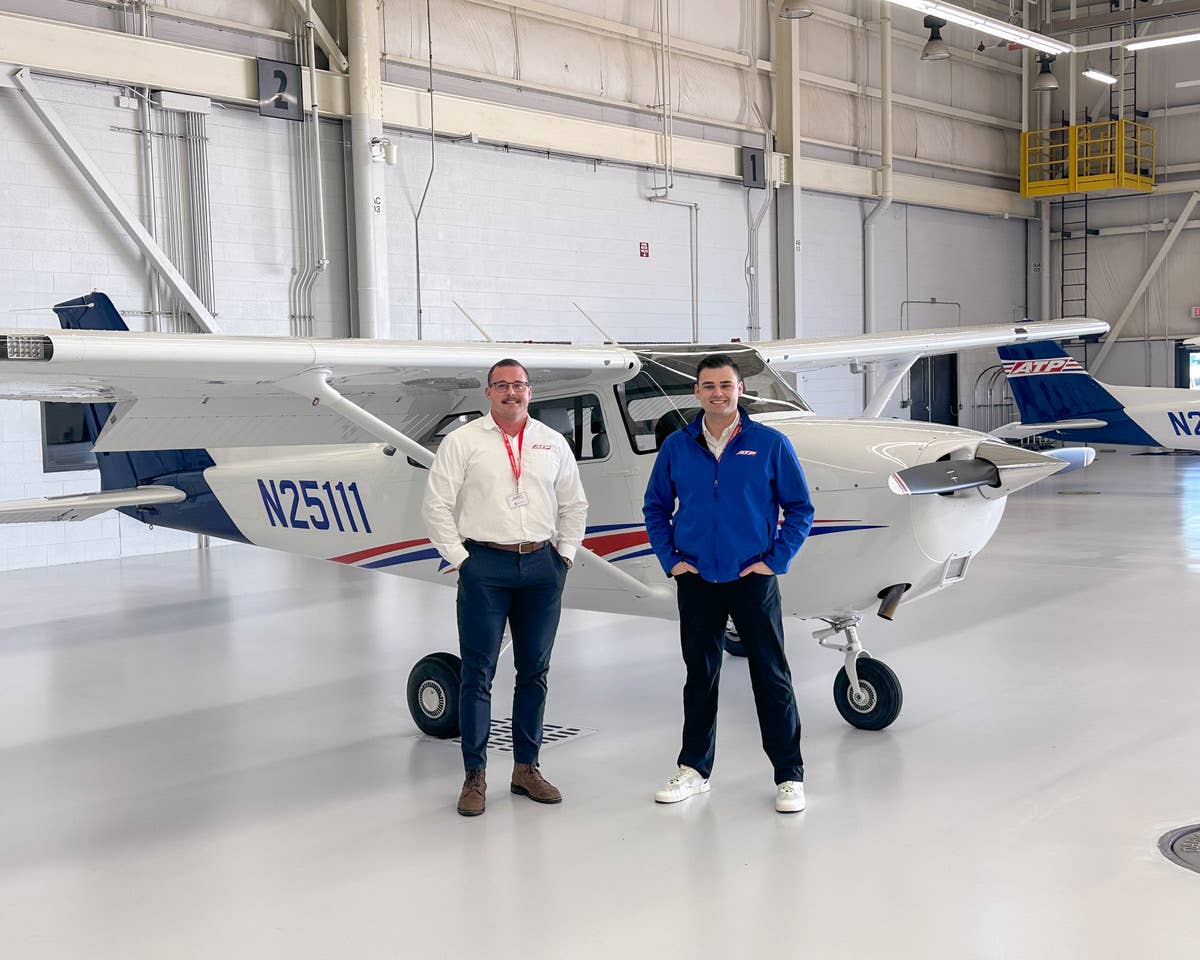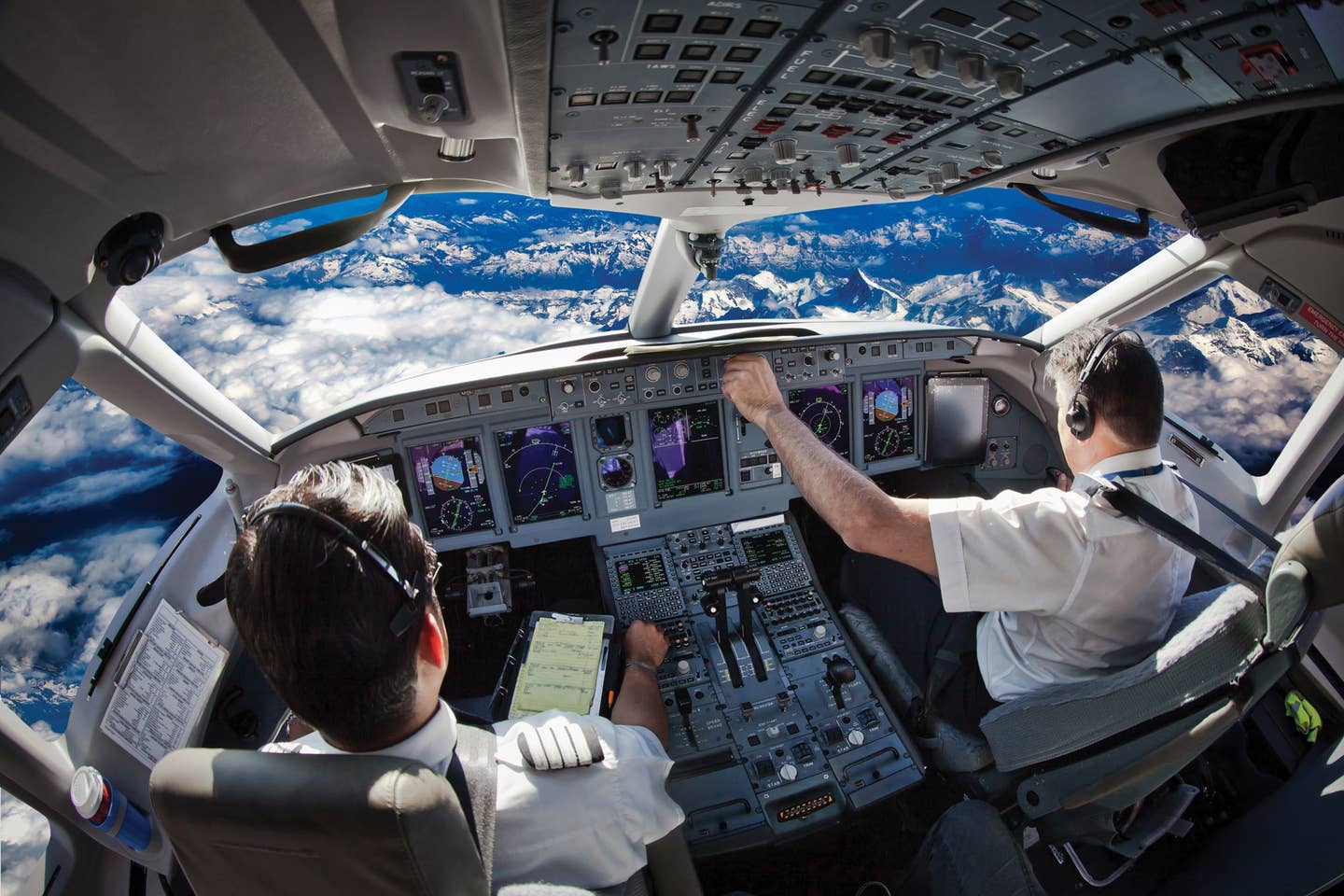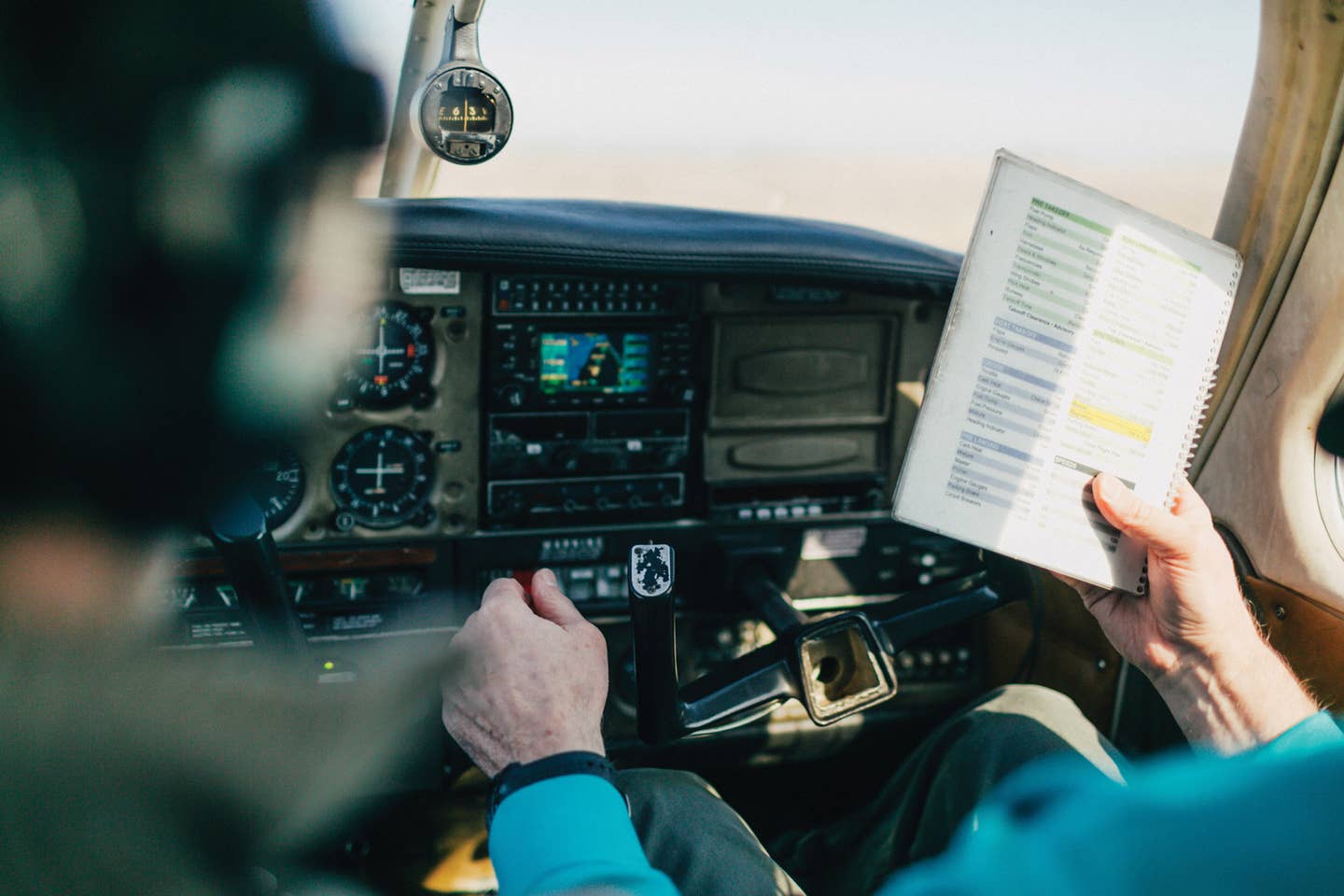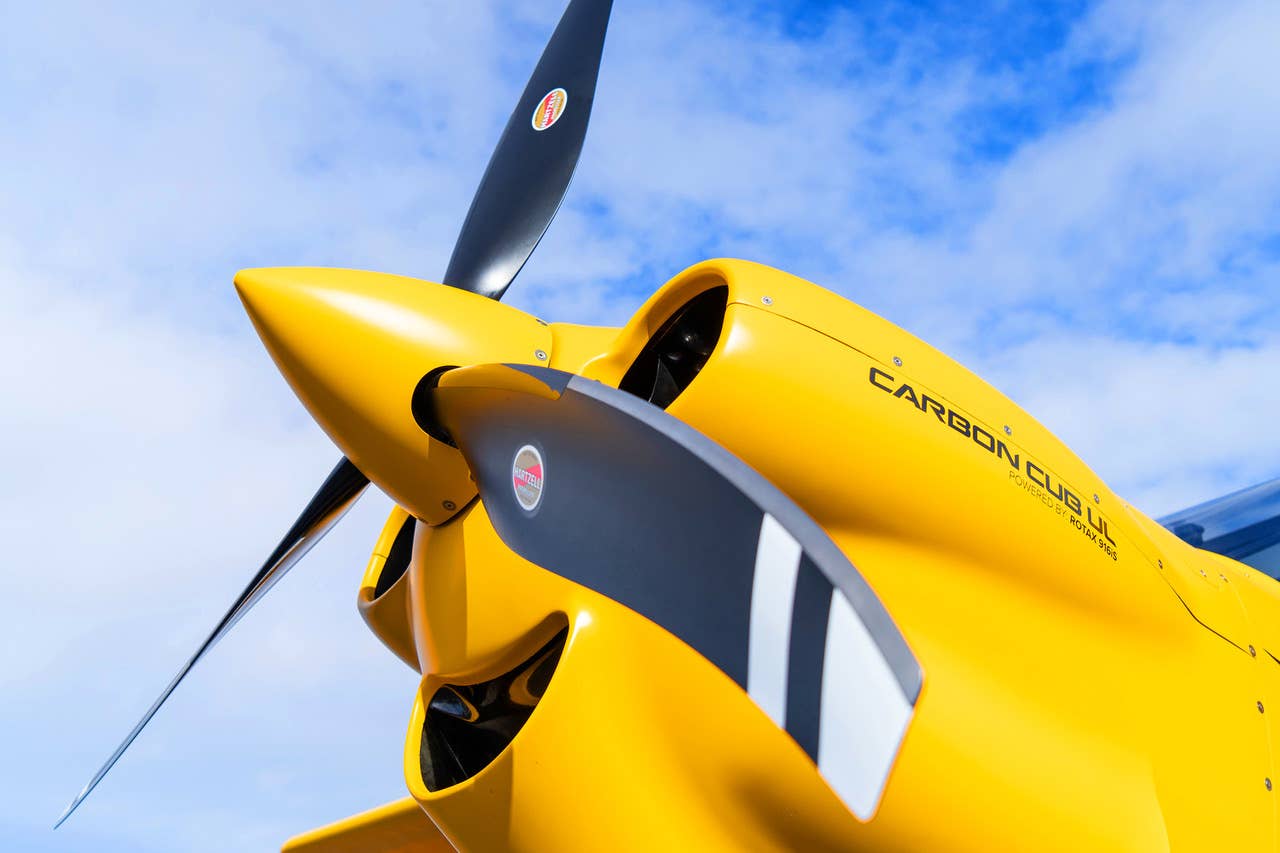Do Something Magical: Learn To Fly
Innovation continues to change flight training, but it’s still about the fun
 Learning to fly takes commitment and dedication, but opens the door to a new world of adventure. |
I'm still learning to fly. Even three decades after earning my private pilot certificate at 17, I'm still a student pilot, and I'm okay with it. I've learned it doesn't matter where you are on the grand road of aviation, an ATP or a newbie taking your first lesson in a Cessna Skycatcher. What matters is that you're on that road. It's something that makes aviators special; we all begin at the same place and never stop learning.
Just about anybody can learn to fly. I've met thousands of pilots during my time in aviation, and they run the gamut in terms of ability, intelligence, skill and physical shape. The common denominator in each one is the burning desire to fly and the drive to challenge themselves to achieve a goal that only a tiny percentage of the world ever will.
As we ease into the new year, many of you have put "learn to fly" on your resolution list. I'm going to let you in on a little aviation secret: Once you've dreamt about flying, you'll never stop. You might as well hang on because you're in for the ride of your life.
Flying's Fuel: Passion
Flying is fun; really fun. In fact, it's a lot more than just "fun," and our English language comes up short in providing words that can describe it fully. There are elements of great challenge---both physical and mental---that give way to great washes of peace and tranquility. There's the acquisition of a skill and the elation of using it to its ideal. There's the deep satisfaction of taking your aircraft like an artist takes a brush, in preparation of doing something magical.
And for all pilots, there's that reverent moment when you're strapping yourself into the airplane and, for the first time, you feel like you're putting it on, like you're wearing it. Flying then becomes a dance between just you and the clouds, separated from the Earth by a lot more than just distance. It's when you and the airplane are one, and you don't so much move the stick as you think the maneuver--- and the airplane obeys. Those are the best days in flying.
 |
I talked to pilots young and old to explain the lure of the sky and to hear the real voice of aviation. One thing they all share is passion, and it seems to be the key ingredient in aviation.
Karissa Hess is only 15 years old but already has a burning desire to fly. She has always imagined what it would be like to be in the air, and she got to experience it for the first time in an open-cockpit biplane, which only served to cement her goal to become a pilot. Her parents don't love the idea of her pursuing a life in the air, but for Hess, it's a calling that's been there since she can remember. "I've always wanted to be up high," she says, "getting a bigger perspective on the world." And her aviation plans? "I want to be an Air Force pilot! I think that would be really cool."
Sammy Mason has flying in his DNA. His grandfather flew biplanes in the 1930s, and his mother, father, uncle, cousin and more are all pilots. "My mom took me up in an airplane when I was two," says Mason. "It was in a Piper Cub." His dad taught him to fly early on, and by the time he was 12, Mason says he was proficient in the Cub. Today, at the ripe old age of 17, Mason is getting ready to fly an air show in his family's Stearman biplane. He also tows gliders on weekends in a Piper Pawnee. Already an aviation veteran, Mason has this advice for those yearning to fly: "Just go to the airport and hang around. It won't be long till someone offers you a ride!"
There's Lou, who I met at a café at a forgotten airport that looked like it stepped out of a time warp. Lou owns a pristine Piper Tri-Pacer in that minty, turquoise blue that many of the type wore in the 1950s. It looks like a museum piece, though Lou flies it every day. He's in his 80s. "Best thing I ever did was learn to fly," Lou said as I ogled his Tri-Pacer. "It renews me and that's why I'm still alive!" Lou let out a hearty laugh. "I can't imagine not flying."
| Redbird Changes The Simulator Game Forever | ||
When general aviation pilots think of full-motion flight simulators, you can bet they're imagining the $10 million beasts at places like FlightSafety or airline training centers. The thought of using one of those complicated simulators---that require rooms full of equipment to function---for primary training would seem ridiculous. But Redbird Flight Simulations out of Austin, Texas, has changed the way we look at primary flight training and the simulator's role in it. Gregoire assembled a team of top technologists and colleagues from his career as a business executive with Pepsico and Dell. The team relied on heavy amounts of innovation, creativity and true entrepreneurial spirit to create something spectacular. Redbird introduced their FMX full-motion simulator to the GA world at AirVenture in Oshkosh, Wis., in 2007. In the ensuing four years, the company has pushed forward, constantly introducing new ideas to the simulation world. Today, they're on the leading edge of flight training, opening a revolutionary facility in San Marcos, Texas, called the Redbird "Skyport." Built from the ground up in just 20 weeks, innovation is in every corner. The facility is an experiment of sorts, developing new ways to train, new ways to apply simulator technology to general aviation, and reengineering the whole idea of primary flight training from first flight to certification and beyond. The facility opened in November 2011, with more on the horizon.
What's so different about Redbird is that they've rewritten what simulators can be, how much they cost and how they work by starting with a blank sheet of paper. In the process, they've developed simulators that are more than just toys or the unrealistic "flight training devices" we have today. Redbird's sims range from desktop models to full-motion models that include their genius "XWIND" crosswind training simulator. While a desktop simulator might not sound impressive, Redbird rethought every detail. They didn't like the way traditional desktop flight training devices sat on top of a desk, causing the pilot to reach up to the controls in a nonrealistic way. Redbird reengineered it, creating components that mount below the tabletop, positioning the pilot realistically. All major components are interchangeable from one simulator to another; yokes, throttles, overhead panels and other parts can be swapped out to create different aircraft models. Creative thinking allowed Redbird to dump the old hydraulic and pneumatic mechanics that drive current full-motion simulators and use electronics instead. Redbirds run on small motors that actuate movement using a gimbal assembly. Redbird's basic desktop simulator lists for $6,995, while their full-motion "FMX" simulator comes in at under $60,000. Those prices include Redbird's stunning, wraparound visuals on their full-motion simulators, and everything an FBO would need to get started. The realism of Redbird's sims is especially stunning, with all kinds of weather modeling and failure scenarios available. Dual-control models are also available to train crew resource management (CRM) and advanced systems. John King of King Schools fame, and an instructor who has seen every innovation in flight instruction for several decades, likens Redbird's simulators to when computers were introduced. "We have moments in our lives that we remember as before or after an event," he said. "There was the time before and after computers, or before and after Steve Jobs gave us all the wonderful things he did. In aviation, we have that now because Redbird is revolutionizing flight training, and we will remember aviation before and after this very exciting moment." For more information, contact www.redbirdflightsimulations.com. |
||
Sport Pilot
Easily the biggest news in flying in at least three decades is the introduction of the sport pilot rule. The sport pilot certificate was created in September 2004 after years of lobbying by the Experimental Aircraft Association (EAA). The EAA recognized that many would-be pilots were put off by the requirements of the private pilot certificate, which they considered onerous (and expensive) for their purpose of recreational flying. The idea of the new rule was to lower the barriers of entry into aviation and make flying more affordable and accessible. It has succeeded wildly.
To earn a sport pilot certificate, you only need 20 hours of flight instruction (and only five of those hours need to be solo), as compared to 40 for the private pilot certificate. You'll only need one solo cross-country of 75 miles as opposed to much more for the private. For many people, the best part is that you don't need a special medical certificate, you just need a valid driver's license. Of course, you need to be at least 17 years old and English proficient.
The sport pilot certificate is more restrictive than the private. You can only carry one passenger; you must fly only VFR during daylight hours; you can't fly higher than 10,000 feet; and you must fly a light-sport aircraft (LSA). The LSAs are a special category of aircraft that have a maximum takeoff weight of 1,320 pounds (compared to a max of 12,500 pounds for the private pilot certificate).
The list of benefits of the sport pilot certificate is long, and that's why it has become so popular. In a recent online comparison, the average LSA rental rate in Southern California was around $110/hour, while a much older Cessna 172 was renting for an average of about $160/hour. If you figure in the fewer hours required, you can count on earning your sport pilot certificate for about half the cost of a private. Finally, LSA aircraft are light, fun to fly and it's argued they make you a better pilot as a result.
| Pilot Shortage: The Trend Continues | |
Lots of signs in the aviation industry are pointing to a pilot shortage in the years ahead. As I write this, the 2011 airline hiring numbers are being published by airline employment experts www.fltops.com. The trend is certainly encouraging for those wishing to become professional pilots. In 2009---the airline industry's worst hiring year in history---only 30 pilots were hired by the 12 major domestic airlines. The year 2010, however, saw a marked increase with 408 pilots hired, and 2011 was an exemplary year, seeing 728 new pilots hired by the majors. The driving force behind the idea of a coming pilot shortage is the explosion of air travel. Boeing's highly respected "Current Market Outlook" report for 2011 shows that passenger air traffic rose 8% for the year in 2010 after a decline in 2009. A 6% increase held through 2011, beating the report's overall forecast of a 5% increase year over year for the next two decades. Boeing's long-range forecast anticipates delivery of 33,500 new airliners over the next 20 years, valued at more than $4.0 trillion. United Airlines recently announced new orders for the Boeing 787 as well as the Airbus A350, now that the airline has merged with Continental Airlines. Airliner orders will, of course, drive the need for pilots as new routes are added and the number of passengers increases. Southwest Airlines announced they'll hire 140 pilots in the first quarter of 2012, and U.S. Airways confirmed they'll hire 20-30 per month through the year. Meanwhile, freight giant FedEx said it will bring on 500 new pilots over the next two years. There are troubles in the pipeline that supplies professional pilots to the industry. According to the FAA, student pilot starts were at their lowest in 2009 with just over 72,000 students in the system. The military isn't graduating as many pilots as they have in past decades, and many military pilots are staying in the military longer. While 1,280 pilots left the military in 2007, only 240 left active duty in 2010. The best statistic to judge future availability of pilots is the FAA's "Original Airmen Certificates Issued" report. This reflects how many pilots are finishing training and going into the pilot supply pool. The numbers are disturbing. The year 2010 was the lowest year on record with 83,632 certificates issued, of which only 3,072 were ATP (Airline Transport Pilot)---the required certificate to fly for the airlines. Compared to 2001 when 7070 ATP certificates were issued, the downward trend is evident. One encouraging trend for general aviation is the explosion of sport pilots. Only 133 sport pilot certificates were issued in 2005---the year after the new certificate was announced. In 2010, approximately 4,350 sport pilot certificates issued. International airlines---especially those in the Asian market---are seeing a huge increase in passenger traffic. Emerging Asian economies are outpacing the world GDP (gross domestic product), and airlines in those countries are forecast to be the most profitable. Asian airlines in particular are already experiencing delays and operational interruptions due to pilot scheduling shortages. According to Boeing, as the world commercial fleet expands to more than 39,500 airplanes over the next 20 years, the world's airlines will need to add 460,000 pilots and 650,000 maintenance technicians, both to fly and maintain the new airplanes and to replace current personnel who are due to retire during the period. All these indicators point to a pilot shortage that possibly has already begun. |
|
 To earn a sport pilot license, you only need 20 hours of flight instruction and a valid driver's license in lieu of a medical certificate. |
Flying's Realities
It's difficult to justify flying based solely on cost. Nobody likes to talk about the fact that we fly because flying is fun and not because it saves us money. Sure, it's more convenient, more enjoyable, and the overall time spent is frequently the same or shorter than the airlines---thanks to today's security requirements and oversold flights. But GA is rarely as inexpensive as a commercial airline ticket, especially when traveling alone. However, airlines can't beat GA when it comes to destinations.
Most people don't realize that 75% of all U.S. domestic major airline flights operate in and out of only 46 airports. And 70% of airline passengers travel only between 30 hub airports. Even if airlines provided more flights to a wider variety of destinations, only 560 airports in the U.S. are certified for scheduled airline service. Meanwhile, GA serves some 19,600 public and private landing facilities in the U.S!
Learning to fly takes commitment and dedication; there are no shortcuts. There's a knowledge component to earning any pilot certificate and not just "stick-and-rudder" skills. Consistency is an important part of any flight training program, and you must set aside not only the funds but the time to immerse yourself in the training. The latest AOPA statistics show that only a small percentage of students who start flight training will finish and earn a certificate. The solution is to set your expectations up front. Know what will be expected of you, your instructor and your training facility. Talk openly with your instructor at each stage of your training. Studies show that if you dig in and make it to the solo stage, you'll most likely earn your certificate.
| Training Academies And Schools | |
A huge variety of flight schools and academies are out there; each with its own approach and feel. We suggest you examine each option carefully to find the flight-training program that suits you and your needs. Visit www.planeandpilotmag.com/proficiency/flight-training/learning-to-fly-20-cooler-safer-and-more-fun-than-ever.html?start=4 for a list of training academies and degree flying programs. |
|
 |
On The Horizon
One of the exciting developments in aviation is the innovation in flight simulators for primary training. Companies like Redbird and FlyIt have created stunning simulators that are so realistic they're revolutionizing flight training. Once strictly reserved for advanced flight training because of their exorbitant cost, mind-blowing simulators are coming to a flight school near you and will affect how new pilots train. Advances in technology are driving the development of these simulators, with their low operating and acquisition costs and total realism.
For pilots looking to move on to a professional career, the FAA created a new rule effective October 31, 2011, that allows student pilots to train for both the private certificate and instrument rating at the same time. This rule eliminates the lag pilots experience between earning their private and building time toward the instrument rating. The FAA discovered how important instrument training was in reducing accidents, and created the simultaneous training allowance.
A complete revamp of training methods, curricula and standards in flight training is being drafted by various groups in the aviation industry. It's an exciting time to be involved in flying, and the future promises even more changes. With an emerging pilot shortage, learning to fly can be more than just satisfying a goal, it could be a path to a new career or the fulfillment of a dream.
I've been fortunate to do many things in my life, including performing my music for thousands of people. In those incredible moments when you can feel the sheer energy of 8,000 people moving you like a wave, I still rely on flying for my ultimate mental release. It's the most rewarding thing I have ever done and anybody can learn. As my old instructor used to tell me, "You teach yourself to fly; I'm just here to keep you from breaking your neck while you do it."

Subscribe to Our Newsletter
Get the latest Plane & Pilot Magazine stories delivered directly to your inbox










